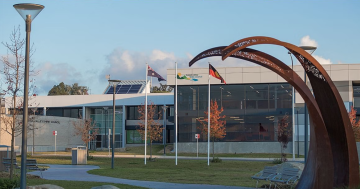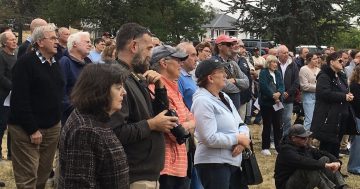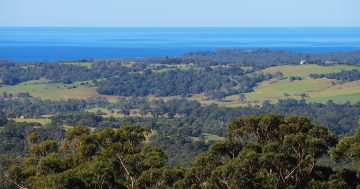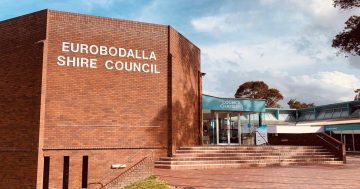
Rates scenarios in the updated Long Term Financial Plan will be presented at the next council meeting on 23 November. Photo: Bidgee.
A rates rise equalling nearly 30 per cent is one scenario being considered to make Queanbeyan-Palerang Regional Council (QPRC) financially viable into the future.
An updated Long Term Financial Plan will be presented to councillors at the next meeting on 23 November as QPRC considers its ongoing financial sustainability.
Mayor Kenrick Winchester said neither Palerang Council nor Queanbeyan City Council were financially viable when they were merged in 2016, and both had been considering options to increase revenue.
“The [merger] legislation stopped us from increasing our income or making some decisions to reduce expenses, like consolidating administration offices or staff,” he said.
“The merged council was not permitted to raise rates for four years.”
As a result he said infrastructure improvements to roads, services and community amenities had been provided with “constrained funding”, and the community deserved better.
“The rate increases set by the Independent Pricing and Regulatory Tribunal (IPART) through the rate peg don’t come close to meeting the increased costs of doing everything the community expects from us,” Mr Winchester said.
“The costs of construction and materials for projects continue to increase. A truck full of gravel or hot mix are both harder to get and costs over double what it used to.
“We’ve had ongoing population growth and the costs to expand services are increasing more than the income received from additional ratepayers. We’ve also had additional costs from responding to multiple natural disasters and the pandemic.”
In response to this, three rates scenarios have been developed to be presented to councillors at the meeting in the updated Long Term Financial Plan.
Should the councillors endorse the new plan, they would then go on exhibition through the Your Voice page on 24 November for the community to raise their concerns.
A statement from QPRC outlined the scenarios under consideration:
- Increasing rates by 12 per cent each year for three years
- Increasing rates by 18 per cent each year for three years
- Increasing rates by 28 per cent in the first year, 25 per cent in the second year and 23 per cent in the third year
According to the scenarios, the first option would result in a “significant reduction” of services.
“This scenario was modelled to consider whether a lower rate rise could work,” a QPRC spokesperson said.
“This scenario is not considered viable as it will require a strategy to reduce expenses by $19.8 million per year.”
It’s considered option two would only allow for core services to be maintained.
“[This] will deplete the community asset base and will require a strategy to reduce expenses by $9.3 million per year,” the spokesperson said.
The third option has been put forward as the scenario which would maintain current services and also provide $11 million each year to bring maintenance of assets such as gravel and sealed roads, sporting facilities, parks and amenities, “back to the levels the community expects”.
“There will also be $1.3 million per year for programs to improve environmental outcomes, provide an increased pensioner rebate across the local government area, and $1.9 million per year to fund new infrastructure like footpaths, pools improvements, etc,” the spokesperson said.
Further details about each scenario will be provided if they are endorsed for community consultation.
Mr Winchester said councillors had a duty to ensure council continued to pay the bills and provide the services the community expected.
“We don’t want to reduce staff, we don’t want to cut services, we don’t want to close pools or reduce our maintenance budgets, but that’s the reality unless we do something about the income we receive,” he said.
“We need to be in a position that will deliver more road maintenance, new footpaths and inclusive swimming pools.”
It’s expected community consultation would be open until the end of January, 2023.
Following that council would then apply to IPART about a rate variation in February.
The 2022 rate peg had been set by IPART at 0.7 per cent, with QPRC granted a special rate variation of 2.5 per cent in June.
It announced in September the base rate peg for 2023-24 would be 3.7 per cent, however QPRC was given a rate of 4.6 per cent to account for population growth.
It is reviewing the methodology it will use to set the rate peg from 2024-25, with a draft report expected in February next year.















